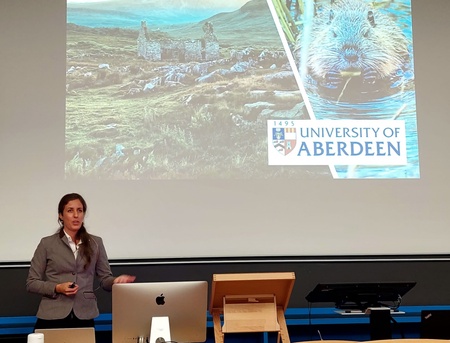How do people perceive and talk about landscapes? And what can we learn about human-landscape relations from language? In her plenary lecture at the University of Zurich, Flurina Wartmann explored these questions and explains how we can use language to examine cultural landscape values
We all know that different languages have different terms to refer to parts of the landscape, but few of us ever question that such terms may not be so easily translated across languages. For example, not every language parcels up the environment in the same way. And if the way in which people conceptualise and talk about different parts of the landscape differ, what does this mean for how we interact with and manage landscapes, for example in protected areas? In her plenary lecture, Flurina Wartmann (Lecturer in Geography and Environment) explored these questions, and using examples from her research in the Amazon rainforest, Switzerland and Scotland explained how we can use language to examine cultural landscape values, and better understand how such values influence decisions on the present and future use and protection of landscapes.
The plenary lecture for the general public, students and staff at the University of Zurich, Switzerland was part of a lecture series on 'Language and Space' organised by the University's Research Priority Programme running throughout 2022, and included lectures by linguists, geographers, Geographic Information Scientists, philosophers and medical scientists.


